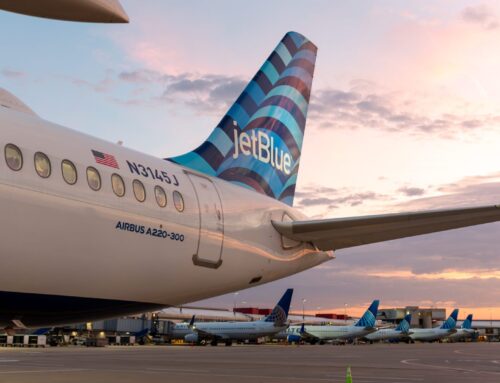Cancellation Rates Improving Nationwide, But Still Irking Passengers
Weather remains primary threat to airline schedules nationwide
By Vipin Punna
Published August 14, 2023
Read Time: 3 mins

There are two announcements no traveler wants to hear while sitting at the boarding gate:
“This flight has been delayed” or, worse, “This flight has been cancelled.”
As air travel returns—and even surpasses—pre-pandemic levels, some passengers are experiencing these dreaded outcomes.
“Delays make me really anxious, especially if I have important plans at my destination where I have to be there on time,” said one recent traveler at Pittsburgh International Airport, who asked not to be named. “I worry about finding and rebooking a convenient option and making it there on time.”
Delays and cancellations happen for many reasons: weather, crew and pilot shortages, and mechanical issues, among others.
Experts say the industry was ill-prepared for the surge in demand coming out of the pandemic, particularly among leisure travelers.
For the first half of 2023, an average of 2.27 million passengers a day took to the skies in the U.S. compared to just 1.6 million a day for the same period last year, according to screening statistics from the Transportation Security Administration. That exceeds the numbers for 2019 by nearly 3,000 passengers a day.
PIT has seen a similar trend. An average of nearly 730,000 passengers a month flew from PIT during the first half of this year, compared to about 630,000 a month in the same period in 2022. That’s approaching the airport’s average of 785,000 passengers a month in the first half of 2019.
And travel doesn’t seem to be slowing down any time soon, as both domestic and international travel are expected to “normalize” and fully recover by 2024, according to the U.S. Travel Association, a national travel industry group.
Delays and cancellations will continue to be part of a traveler’s life, said Geoff Freeman, president and CEO of the organization.
“That kind of demand in a system that is woefully underfunded and understaffed is likely to create substantial frustrations among travelers,” he said.
In fact, travel demand and other factors, including weather, have led to more delays. Nearly 30,000 more flights experienced delays from January to April of this year compared to last year, according to the latest data from the US Department of Transportation. That’s more than a 7 percent increase in delays from the same period in 2019 and 9.6 percent more than last year.
Weather-related issues—including storms, floods, and smoke from Canadian wildfires—have contributed to 72 percent of this year’s delays in the National Airspace System, a 10 percent increase from last year. The remainder were due to increased volume, runway, equipment, and staffing issues.
One piece of good news: Cancellations, although still prevalent, are showing signs of subsiding. They are occurring less frequently and, luckily for travelers, have hit record lows since the pandemic began.
Nationwide, about 36,000 flights, or 1.7 percent of all flights, have been canceled so far this year. That’s more than 22,000 fewer cancellations than the same period in 2019 and more than 40,000 fewer than 2022. Cancellations at PIT are down nearly 3 percent from last year and even a half-percent lower than 2019.
Weather, once again, is the main culprit—cancellations jump every time there’s a bad storm system. On Aug. 7, more than 2,800 flights were cancelled as powerful thunderstorms rocked the East Coast, according to tracking site FlightAware.
Tips for travelers
Flight cancellations are not an easy call for the airlines. The process varies from carrier to carrier, but there are common elements, such as the use of an advanced computer program to optimize schedule and cancellation decisions.
“We take into account factors such as the number of itinerary options available for customers,” a Southwest Airlines spokesperson told Denver7 News. “The goal is always to try and preserve efficient, timely alternatives to limit the disruption to customers, employees and aircraft flow.”
Bottom line for travelers: If the weather looks gloomy, check with your carrier. Travel experts advise checking your airline’s travel app, as it will be fast, direct and have the most up-to-date information on available flights and seats.
Customers should also be proactive and know their airlines’ policies regarding a cancelled flight, experts say.
“If your flight is significantly delayed or canceled in the U.S., you’re entitled to a full refund for your ticket,” said Zach Griff, senior reporter at The Points Guy, a website that covers the industry.
“Even if [the airline] automatically offers you a credit, you’re entitled to a refund” through the Department of Transportation, he said.
Other tips from experts:
- Monitor weather conditions days before your flight.
- Book the earliest flight of the day to maximize chances of being rebooked if something goes wrong.
- Book your flight through the airline and sign up for their loyalty program. (It’s free!)
- Get a flight tracking app and turn on the alerts.






